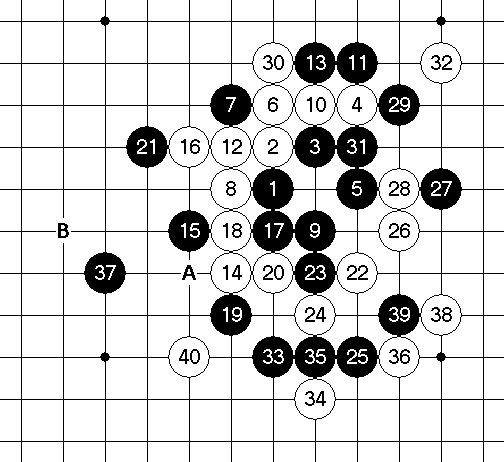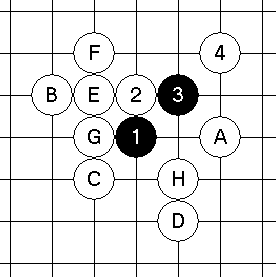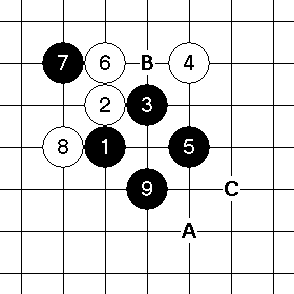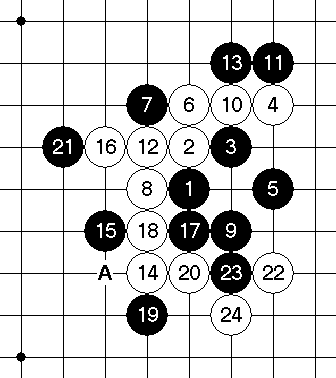This game has been played debut 4B, which, as the author of the book “Tiger in a cage”, if specially designed for playing black. The Renju without regulations, as the players were convinced of our website in the very first tournament, black confidently win. On debut regulations Yamaguchi is the only answer White 4th course – it has its own steam in the cross pair of black stones, which resembles the initial balance in the game “Reversi” ( “Othello”). This symmetrical statement understands the benefits “ringing stones” and “Tiger in a cage.”
Note that the exposed white 4-th move (see chart below), although it has the 4-C symmetrical counterpart, but may differ materially due to the distance to the edge of the board (!), Including on the number of possible alternatives to the 5th course for blacks. It seems to me as standing on different flanks of the boat in the starting line-up – though look symmetrical, but the goals they may have quite different (forgive me, chess, if this parallel is not very appropriate).
Appointed the party the number of alternatives to the 5th course – eight – may seem daunting, but it is quite reasonable. Despite the fact that the 4 th move closes a pair of black at one end, it is rather weak. Alternatives C, E, F and G are aligned close enough to the first two black stones, and almost certainly they are to win for Black. Option 5-H seems like the played 5-A, but in fact it is also a win for Black. Interesting alternatives B and D: for example, in response to 5-B White can play passively, but it is possible that and efficiently, placing 6th stone cut through the line 4-2-6 in the form of “knight’s move” (the beginning of building a “protective network “). In the case of 5-D White can play the same 6-th move, as in the game, however, point D is already on (!) The first two black stones than point A, which can serve as equalizing chance factor.
After the selected course of 5-A opponents have placed the 10th course of the famous in the opening 11D variant “mare”, often played during regulation RIF and to understand these at the beginning of the debut Benefits … with one important amendment – arrangement of stones in the game is different turn and shift (!!) at one point on the diagonal (90-degree rotation around the center, of course, everything is not affected).
It must be said that in white, except for the course 6-6, there is no adequate response. If 6th inside cut the pair 1-5, then 7-A with a gain, and if the outside closes 6-8, the 7-C, 8-6, 9-B and then in white no protective moves, well in response to the far-C 6 black plays 7-8, and after closing triple inwardly and 9-7.
Further drawing was also conducted on an embodiment of the 11D until the 20th turn. Then divergence – classically 11D played 21-24, 22-23 and 23-A.
But here, given the offset to the edge of the board, the course of 21 seems more logical, you can continue the systematic environment to realize the separation of white and attempt to move 37. The diagram below black stones 11, 13, and further all the time are “outside” for whites. The situation in the party, the course of 40-B can help to extinguish the fire on the left flank, but the fire will burn many more moves.

Option 34-A, 35-36, 36-35 in an attempt to press the board or in a corner to the lower edge of the black does not have much chance of success: the course of 37-38 in this case pulls resources from above, white can answer 38-39, but black’s advantage to a decisive close. Not having enough time to calculate, easy to make a mistake.
But to close the three black 36th course on the other end seems to be the best one on hold, but hardly more than that.
« Announcement: New Year blitz in Moscow Championship website 2016 Renju Soosyrv-8 third stage »



